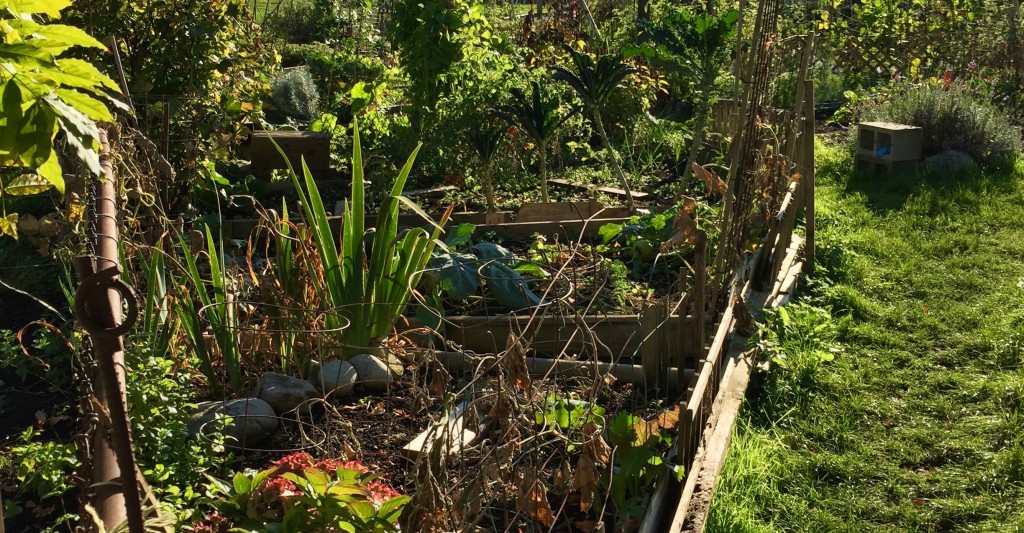
Is your community garden looking a little bland?
While your community/urban garden may be colorful enough in the blooming spring and summer months the latter half of the year can look (and feel) a little dreary. This can have an influence on the psyche of younger gardeners, those who require a little extra stimulus to keep engaged for longer periods of time. Sometimes the smallest thing can have the biggest impact on an experience, and when it comes to community gardening adding a little color can go a long way.
Today, we look at some fun ways to brighten up your urban gardening project to keep your little helpers interested and enthusiastic through all four-seasons.
5 Ways You and Your Kids Can Brighten Up Your Community Garden
1. Turn the Garden Fence into a Canvas
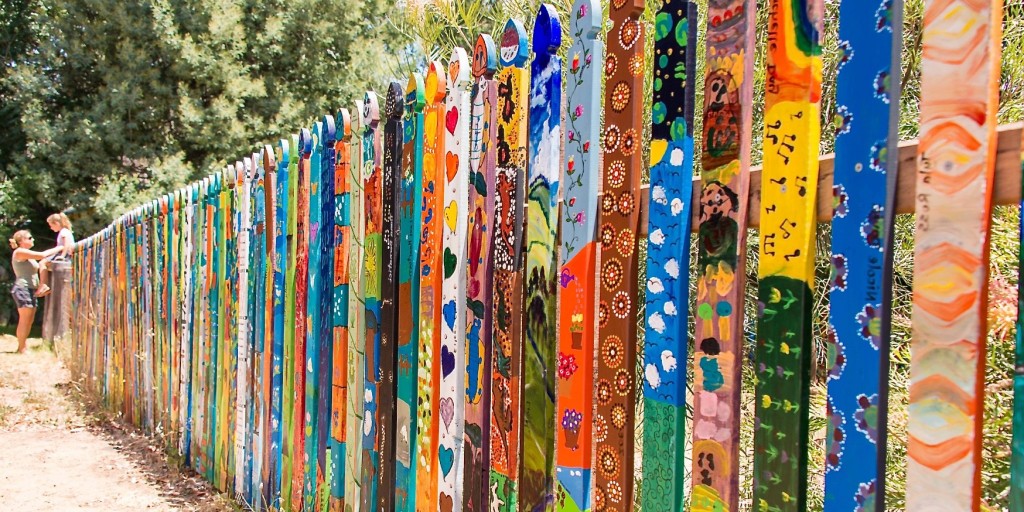
Give your community youth paint brushes, a variety of eco-friendly paints to cover the color spectrum, and relatively free reign to get their creative juices flowing. You will end up with one of the most beautiful urban garden settings in town. This project not only brightens up your community farm, it instills a sense of pride for all kids who participated. The colorful garden borders will serve as a beacon for their frequent return and encourage others to get involved when the fence needs touching-up in the future.
2. Add Color to Everyday Gardening Tools
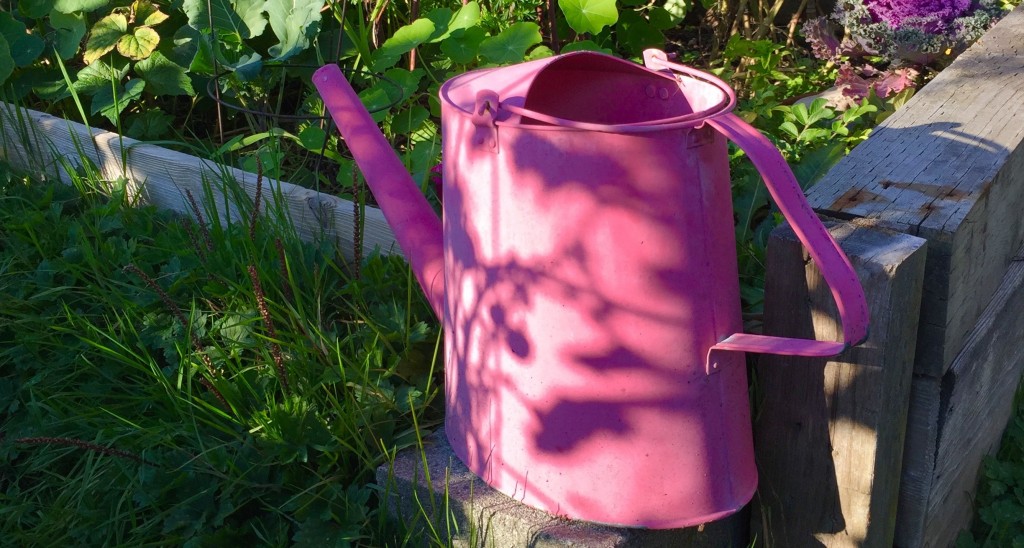
Gardening tools (shovels, watering cans, etc.) aren’t exactly the most exciting items. The novelty of using them (for your kids) can wear off pretty fast. However, adding a splash of color to the materials used in garden maintenance is a fun way to spruce up the scene and encourage younger children to pick them up and put them to good use. Allow them to paint these items in their favorite colors and patterns too.
3. Add Art Projects in the Garden
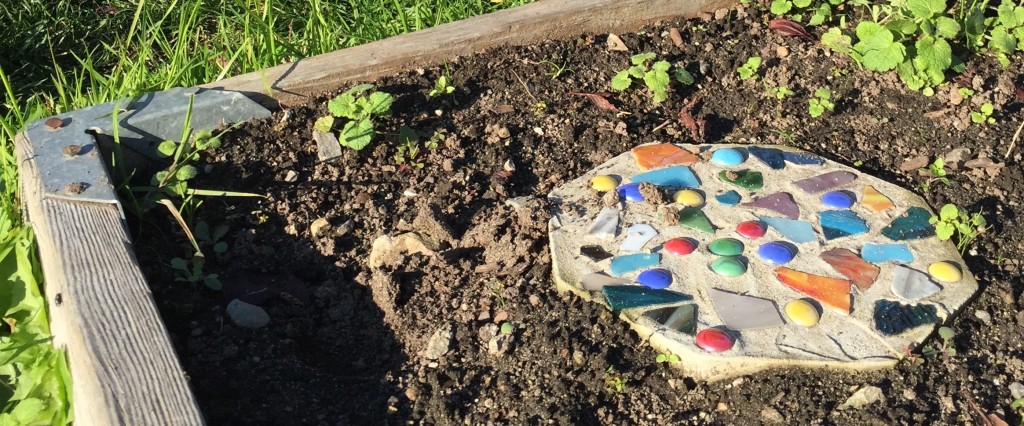
Community gardens serve as the perfect setting for art installations. Older kids (pre-teens and adolescents) will especially embrace this project. They get to put their minds to use, coming up with ways to create works of art and sculptures that can withstand all-season weather. For example, the image above depicts the use of repurposed glass, ceramics, and painted stones embedded in clay to create an inspiring scene in a nook of a local community garden.
4. Plant All-Season Flowers Too
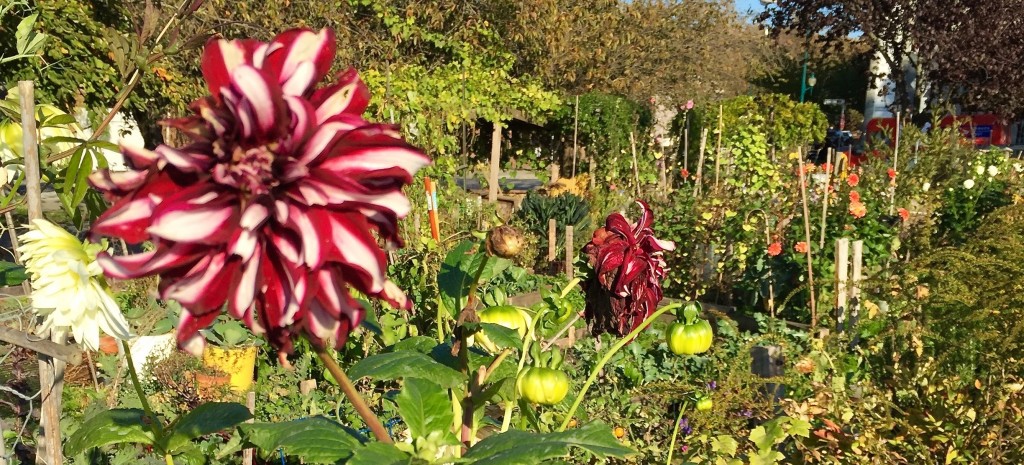
As many of the fruits and vegetables come to harvest your urban garden begins to lose its hue. To account for this period, plant perennials that will bloom in the autumn and quite possibly last through the winter. Chrysanthemums and false sunflowers are examples of perennials that grow well in the colder shoulder seasons. Teaching local children how to plant flowers in addition to produce will give them an even greater understanding of the growing process and the changing seasons.
5. Build a Whimsical Birdhouse and Invite Feathered Guests
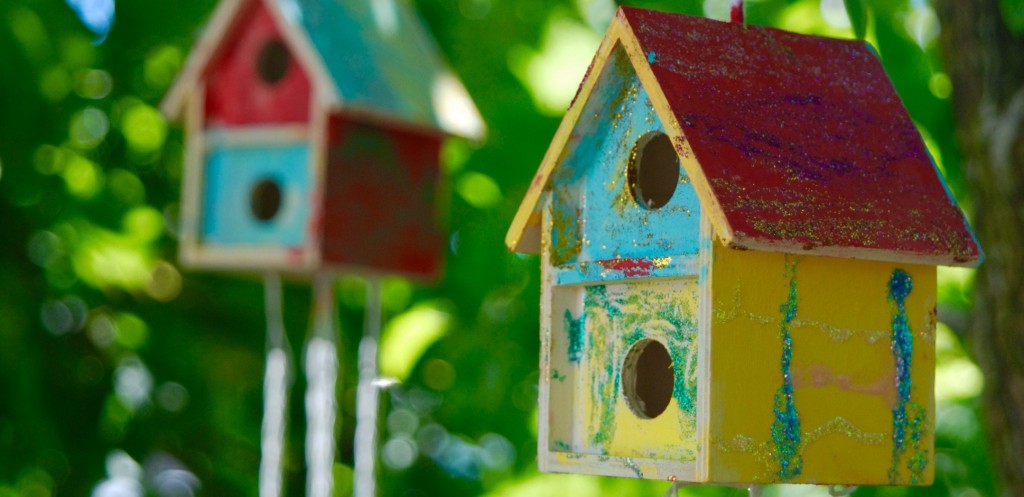
Community youth of all ages will love the opportunity to put their woodworking and painting skills to good use to create birdhouses for the garden. This not only helps create a truly magical scene, it encourages birds to claim the garden as their home. Birds will help keep your vegetable beds free of pests, serving as the ultimate concept in organic insect control. Add further flare (and protection) by installing a birdbath. The result will be a bird sanctuary that kids will absolutely love, while insects and pests will run for the hills.
We hope you enjoyed this article. You can find other fun ideas to keeping kids engaged in your community garden project here. If you have any other suggestions that you’d like to share please follow our Foundation’s Facebook, Twitter, and/or Google+ and let us know.







